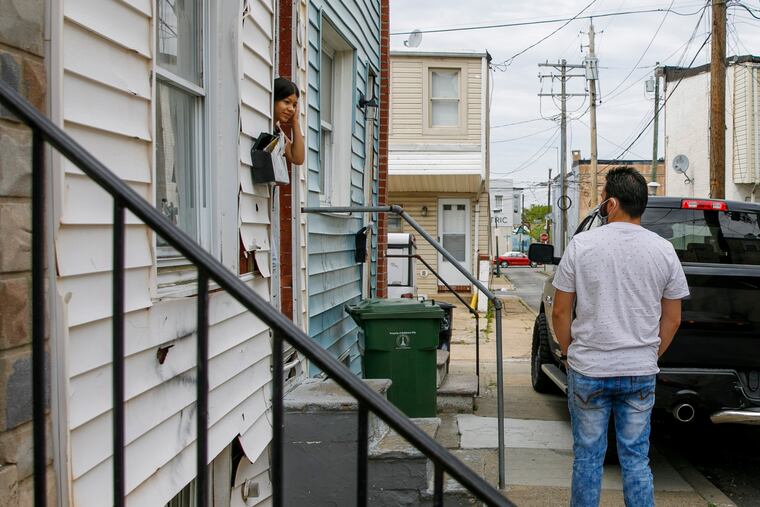During coronavirus pandemic, crime drops in many U.S. cities, but not all
With fewer people on the streets, and more in their homes, some big U.S. cities have seen significant decreases in crime during the pandemic, according to statistics gathered by the Police Executive Research Forum.

With fewer people on the streets, and more in their homes, some big U.S. cities saw significant decreases in crime during the pandemic, according to statistics from 30 large and midsize cities and counties gathered by the Police Executive Research Forum. Some saw spikes in violent crime and auto theft, however, and police said closed businesses were more frequently targeted for burglaries.
The Washington-based think tank compared crime statistics from March 16 to April 12, the outset of the coronavirus shutdown, with the same period in 2019. Of the 30 jurisdictions, 18 saw decreases in violent crime — murder, rape, robbery and aggravated assault — as the pandemic hit the United States, which included a 33% drop in San Francisco, a 25% drop in New York City and a nearly 25% decline in Los Angeles.
Washington and Baltimore both saw an 8% decrease in violent crime. But 12 cities saw increases, which included a 21% jump in Denver and a nearly 12% increase in Houston. Austin and Nashville were among the cities that saw smaller rises in violent crime.
Homicide numbers were mixed — deaths increased in nine cities, decreased in nine cities, and 12 reported no change. Slayings in Los Angeles dropped from 31 during that period in 2019 to 16 in 2020, but homicides in Nashville during that period rose from four to 14. Homicides in Baltimore rose from 20 in those weeks last year to 23 this year. In Washington, they went down, from 11 to 10.
Chuck Wexler, the executive director of the research forum, said he and a number of police chiefs he had spoken to think "the pandemic has not dramatically altered traditional patterns of gang warfare, drug-related violence, and individuals using guns to settle personal disputes. These serious, deeply entrenched problems continue to drive much of the violence in our communities."
Aggravated assaults increased in 13 of the 30 jurisdictions, with increases of at least 25% in Washington, Denver, Houston and Volusia County, Florida.
» READ MORE: A Philly cop who had the coronavirus and was on a ventilator for 20 days shares his story of hope
As always with crime statistics, it is worth noting that these are only one month's worth of numbers, and the number of crimes, particularly homicides, can randomly fluctuate and are best assessed over longer periods to detect true trends. But the first month of the pandemic created unprecedented changes in American society, and it will be interesting to see whether some of the dramatic crime shifts in that month continue during the stay-at-home period and beyond.
Property crimes, for example — burglary, larceny and auto theft — declined dramatically, with 25 of the 30 jurisdictions reporting drops in the March-April period this year. Baltimore saw a 43% decrease, Washington a 36% decrease and San Francisco a 46% decrease. Larcenies dropped in 28 of the 30 jurisdictions, the forum's data show.
It figured that residential burglaries would plummet, as more people were staying home during the day. But Wexler said police chiefs report that business burglaries are surging as thieves target shuttered establishments and fewer cleaning crews are working in office buildings at night. He said commercial burglaries drove the overall burglary rate up nearly 44% in Seattle, 41% in Denver and 17.5% in New York City. Total burglaries fell 23% in Washington and 36.5% in Baltimore.
Another side effect of the pandemic — people not driving their cars nearly as much — may have contributed to some spikes in auto theft. Auto thefts increased in 16 of the 30 jurisdictions, including a 59% rise in Austin and a nearly 26% rise in Salt Lake City. Auto thefts in Baltimore dropped nearly 35%, and the District saw a 2.5% drop.
Police have been less busy during the pandemic, the statistics show. Twenty-nine of the 30 jurisdictions reported declines in calls for service. Only Prince George's County, Maryland, with a 3.4% rise, showed an increase, and Chicago saw a 25% drop in calls. Washington and Baltimore saw approximately 20% fewer calls for service.
Arrests plummeted, too, as police joined the effort to incarcerate fewer people during the outbreak. Only 22 jurisdictions provided arrest data for the month, but 18 were down for Part I crime; for lesser Part II crimes, arrests were down in all reporting jurisdictions. Boston police arrested 66% fewer people for serious crimes, while authorities in Miami and Chicago arrested 61% fewer people and 53% fewer people, respectively. Washington saw 44% fewer Part I arrests, and Baltimore had 36.5% fewer Part I arrests.
» READ MORE: New details emerge in shooting death of Delco musician whose body was found in Mount Moriah crypt
Wexler said police officials wonder whether the drop in arrests, as well as a pullback on community policing because of social distancing, will eventually lead to more crime. Traffic enforcement has been scaled back dramatically, Wexler said. In New York City and the state of California, police have expressed frustration about repeat offenders being released back to their communities, where they could possibly swiftly reoffend.
Police are also on alert for increases in crimes related to the pandemic’s effect on unemployment, family financial troubles and domestic violence. “That doesn’t mean that the factory workers or retail clerks who lose their jobs today will become the burglars or bank robbers of tomorrow,” Wexler said. “But the desperation that comes with this level of economic hardship could impact domestic violence, child abuse and other types of crime.”